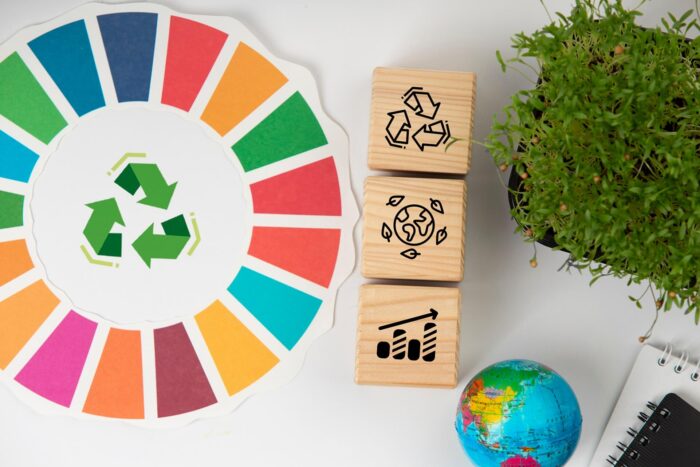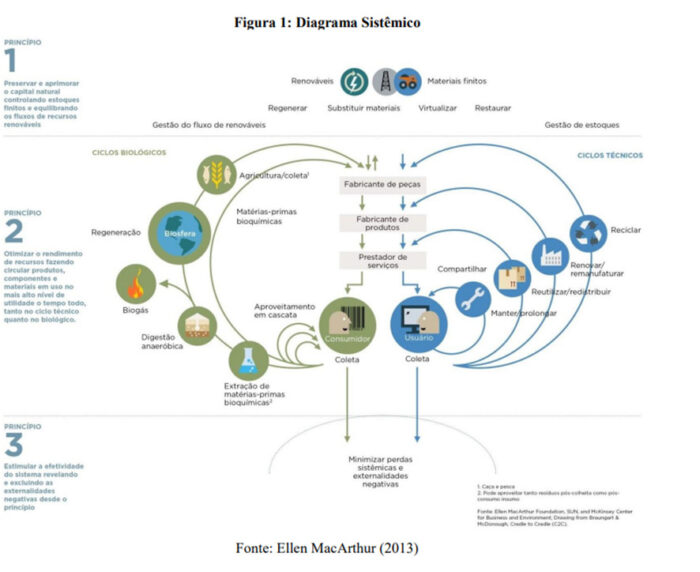
By Equipe de Redação
Posted in November 1, 2023

Ellen MacArthur is a prominent advocate of the Circular Economy and the founder of the Ellen MacArthur Foundation. She has developed a conceptual framework that includes three fundamental principles for the Circular Economy. Here are these principles and their explanations:
This principle suggests that products and systems should be designed with careful consideration of their ability to be regenerated, reused, and recycled. This implies that materials and components used should be chosen based on their ability to integrate effectively into biological or technical cycles, rather than being discarded after use. Biological-based design refers to materials that can be easily reintegrated into nature, while technical-based design involves materials that can be recycled or reused in industrial processes.
This principle encourages the maximization of the lifespan of products and components, reducing early obsolescence and promoting maintenance. This means designing products that are durable, easy to repair, and upgrade. The idea is to extend the lifespan of products to reduce the amount of waste generated over time. This may also involve business models based on services, where companies retain ownership of products and provide services instead of selling products as consumer goods.
This principle emphasizes the importance of restoring and regenerating natural ecosystems. Circular Economy is not limited only to the cycle of materials and products but also aims to reverse the damage to natural systems. This can be achieved, for example, through sustainable agricultural practices, reforestation, proper water management, and biodiversity conservation. The idea is that by regenerating natural systems, we can ensure the continuous availability of essential resources for life and economic production.
These three principles of the Circular Economy are interdependent and aim to create a more sustainable system, where resources are used more efficiently, waste is minimized, and environmental impacts are reduced.
Organizations have been seeking to develop their businesses towards implementing circularity as a strategic measure, intended to both develop new productive forms and ensure brand repositioning in the market.
To measure the level of Circular Economy development in businesses, some parameters have been developed, including initiatives in Brazil.
Below, we follow with some ways to identify levels of Circular Economy in an Organization:
Nonexistent – No value is created from Circular Economy activities
Regular – Minimal waste management and other impacts
Operational – Value is generated through learning and experience in exploratory activities on Circular Economy principles.
Systemic – Generation and capture of value increase as Circular Economy appropriation increases.
Participatory – Appropriation focus is outward, aiming at optimizing the supply chain.
Multiple circular systems are generating value, for which internal processes and design are effective.
The Circular Economy strategy focuses on the supply chain, while Circular Economy is well-established internally.
Circular Economy competencies are part of employee training.
Formal training with supply chain partners is operationalized.
The infrastructure enabling the exchange of physical and digital resources is well-established.
Advanced technology is implemented to automate the flow of supply chain information to optimize the physical flow of materials and products.
Product integrity data is available throughout the supply chain, allowing for extended product lifecycles and keeping products in circular cycles.
Innovative – We create value from optimized use and cascades between all circular systems.
Circular Economy is embedded in the organization’s strategy and management.
Circular Economy competencies are strategically prioritized throughout the organization and with the vast majority of external partners (suppliers, for example).
The supply chain facilitates a continuous flow of materials, waste, and information.
Internal and supply chain processes are designed for Circular Economy to provide efficient and effective processing of products and materials.
Products are designed for Circular Economy, minimizing material use while maximizing product lifecycle.



Our business analysts are ready to help your company with the best environment solutions.